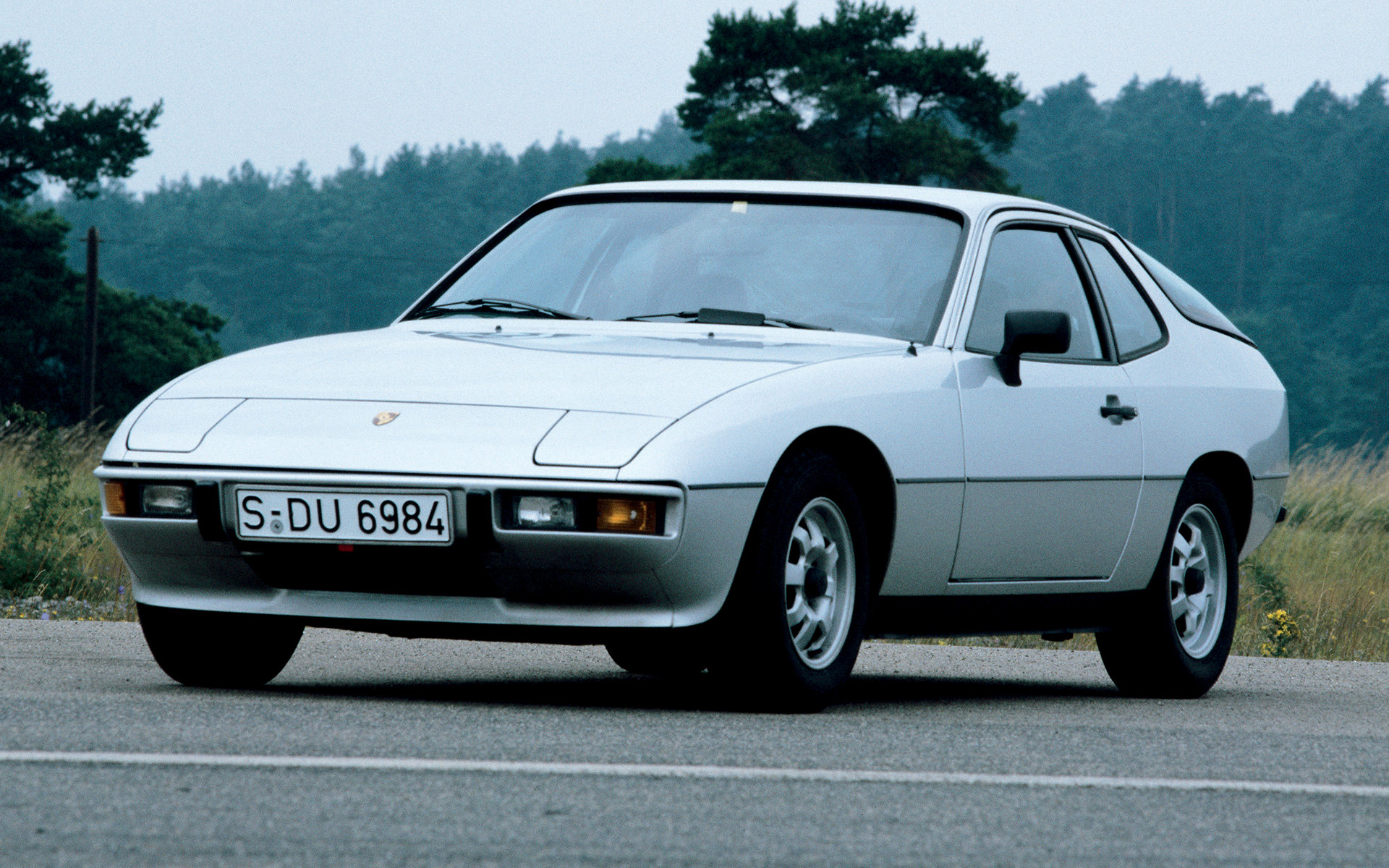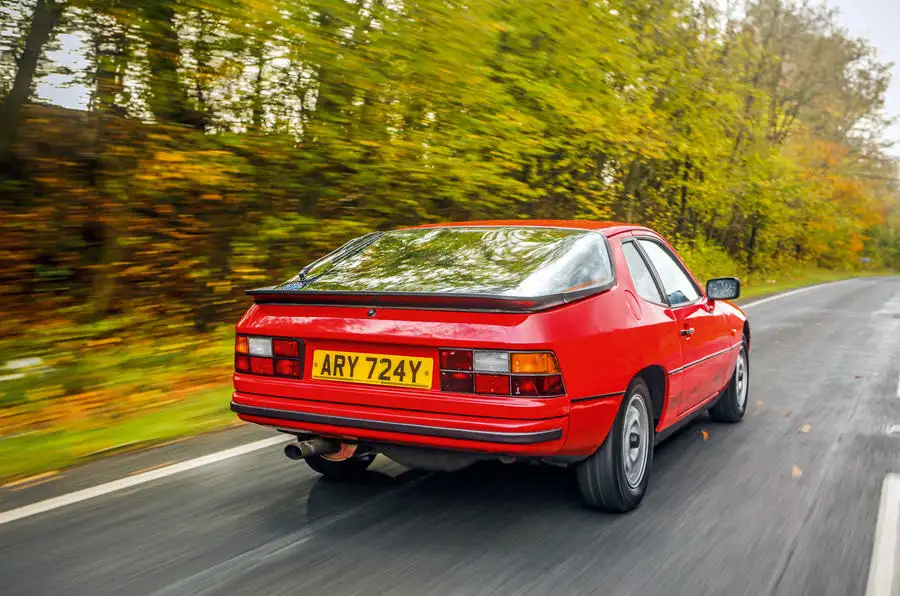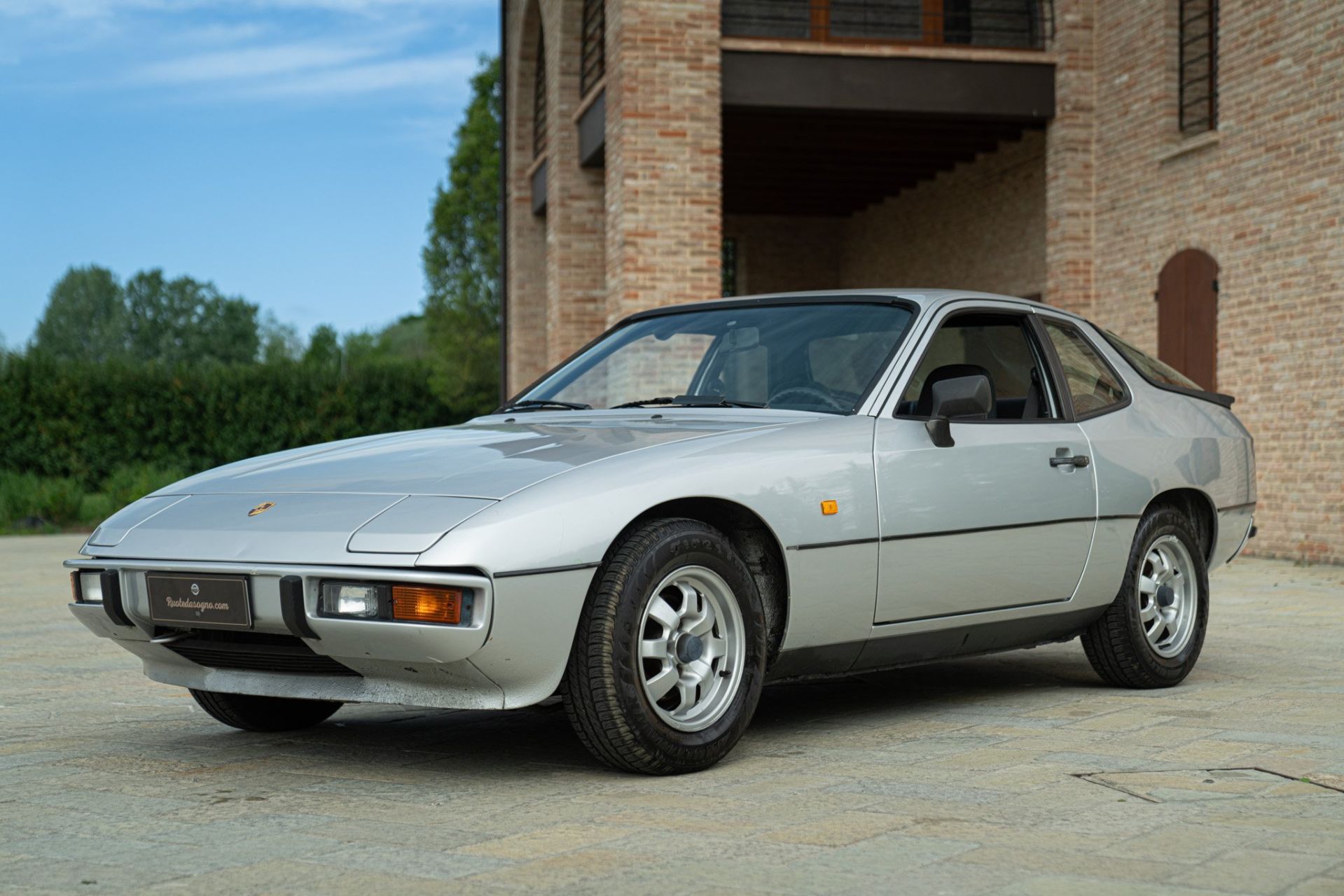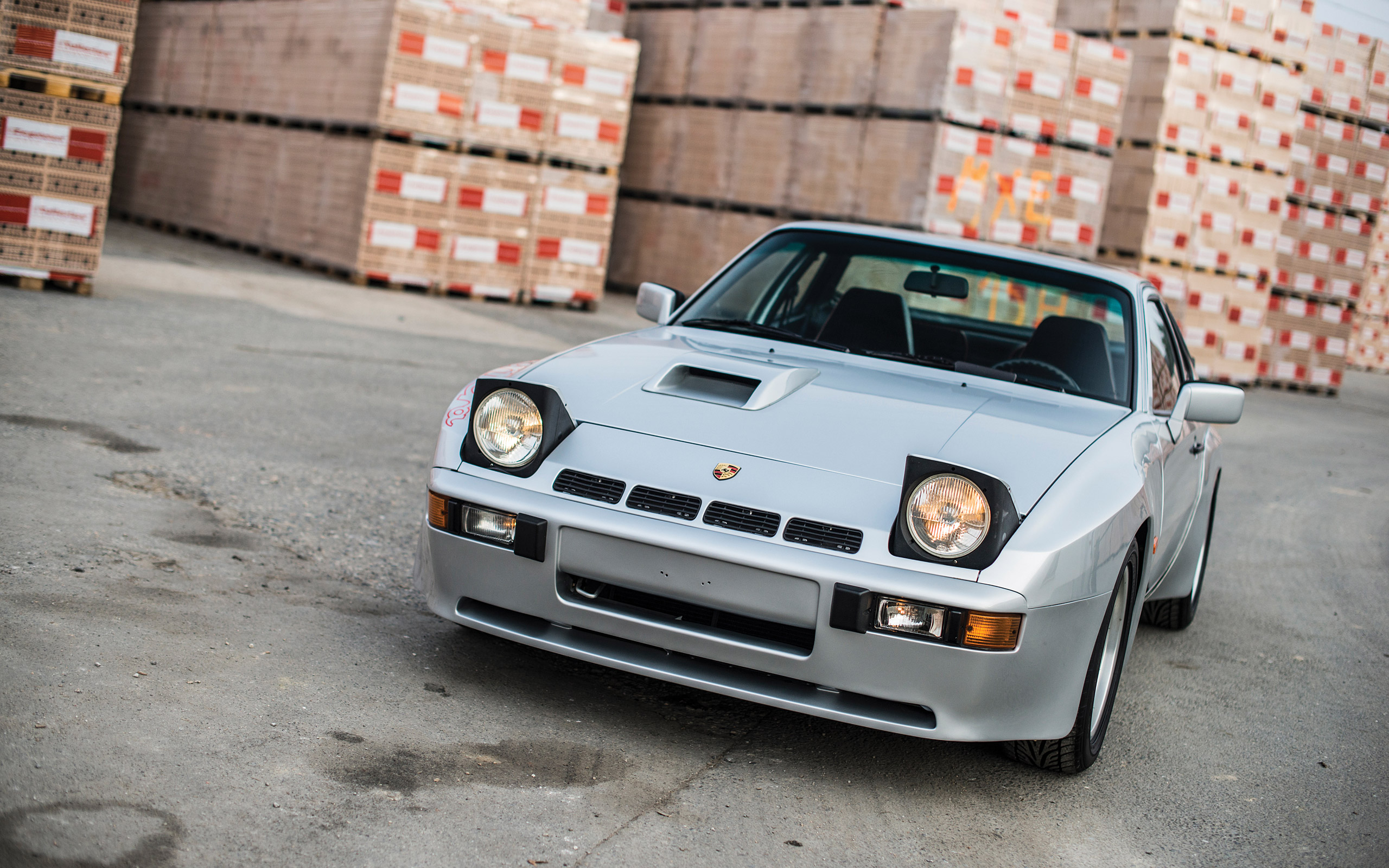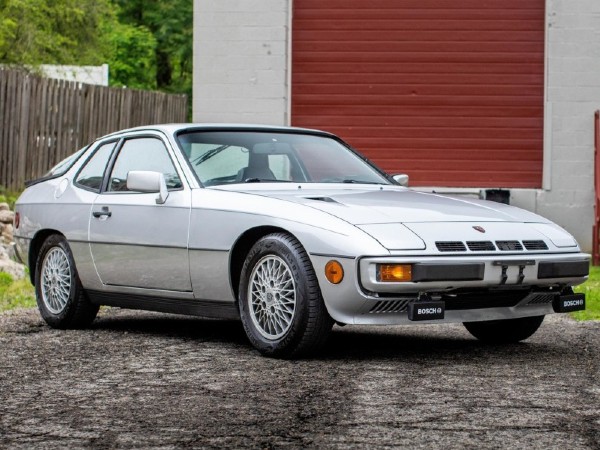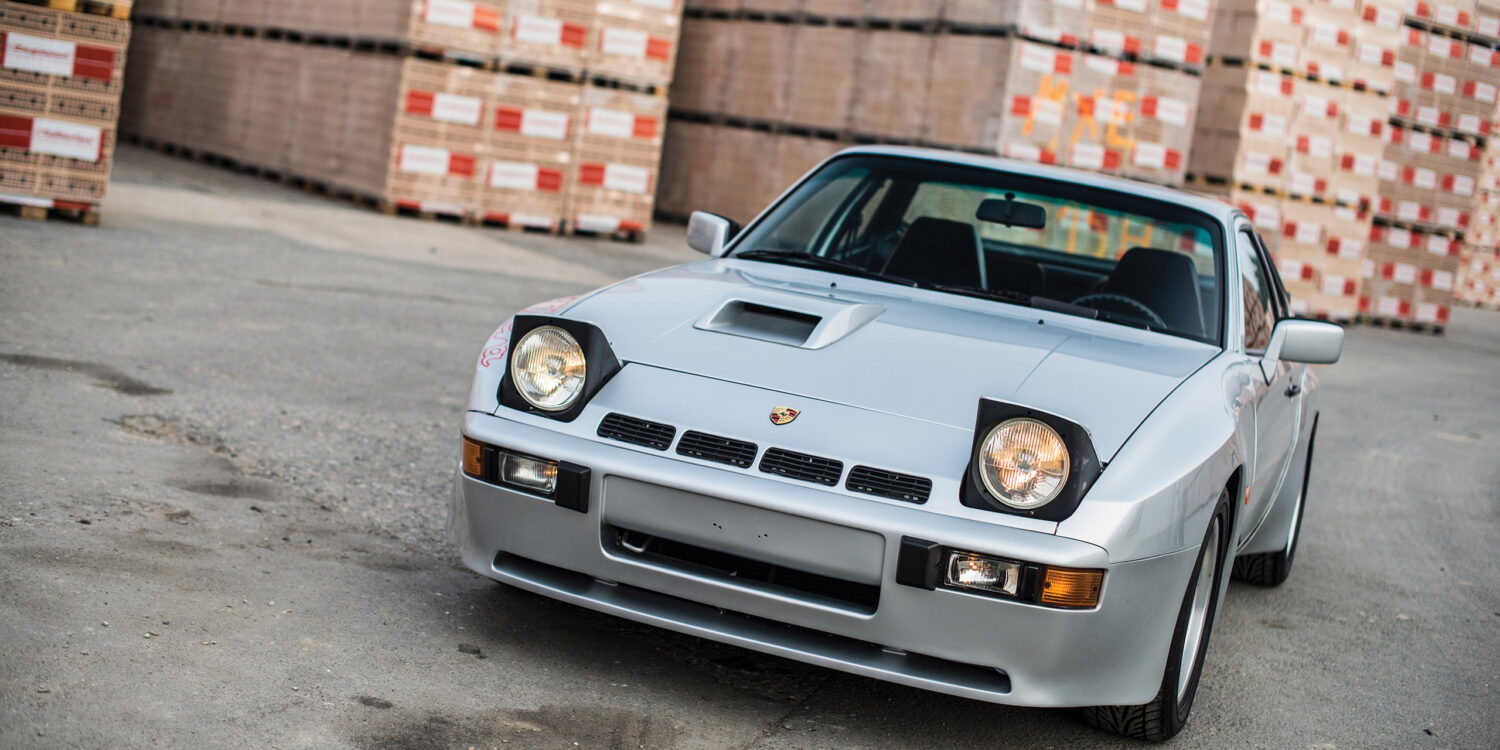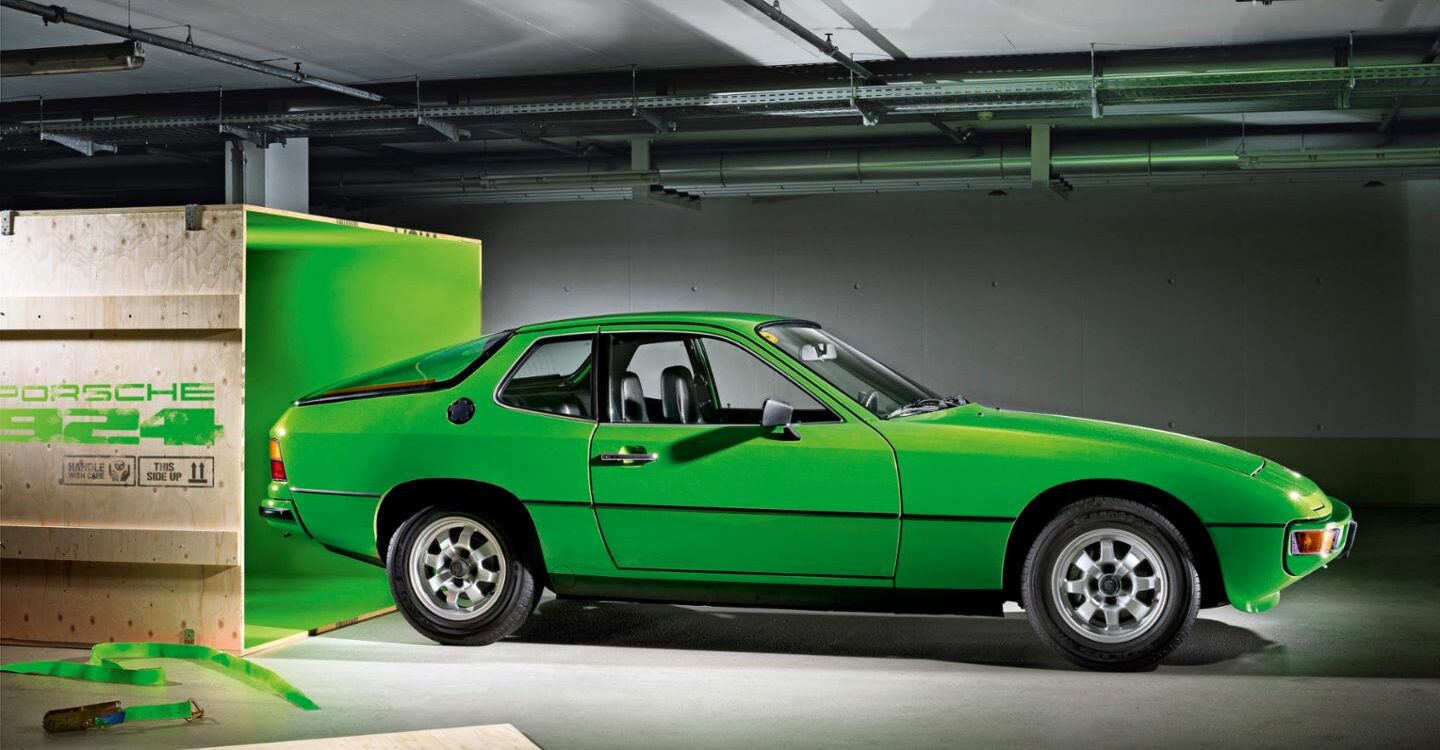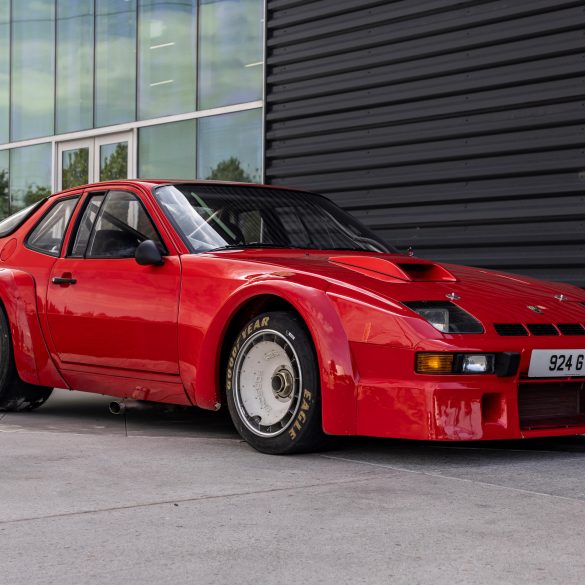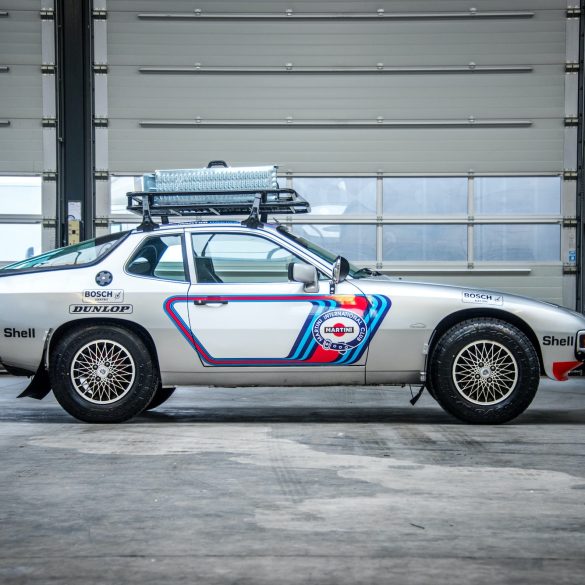Porsche 924 Buyer's Guide
Buying a Porsche 924? Our (Seriously In-Depth) Buyer’s Guide Covers Key Models, Potential Issues, Market Values, Expert Tips, What To Expect & MUCH More.
The Porsche 924 holds a unique place in Porsche's storied history. Introduced in the mid-1970s as an accessible, front-engine sports car designed to broaden Porsche's appeal, the 924 sparked both enthusiasm and controversy among purists. Initially developed as a collaboration with Volkswagen, it eventually became a critical stepping stone, paving the way for future front-engine models such as the Porsche 944 and 968.
Underneath its sleek, aerodynamic silhouette, the 924 featured innovative engineering for its time, including a rear-mounted transaxle providing near-perfect weight distribution. This setup endowed the car with surprisingly agile and engaging handling characteristics, even if its modest four-cylinder engine was sometimes overshadowed by Porsche's more powerful rear-engined icons. Over time, enthusiasts have come to appreciate the 924's balanced chassis, everyday usability, and elegant simplicity.
Today, the Porsche 924 is increasingly recognized as a genuinely collectible classic sports car, and values have steadily climbed, especially for well-maintained or particularly rare examples, like the 924 Turbo or limited-edition variants. Yet, the journey to ownership can be tricky: decades-old examples can present mechanical and cosmetic challenges, and knowing exactly what to look for can save you from costly mistakes.
In this seriously in-depth buyer's guide, we'll explore every facet of purchasing and owning a Porsche 924—from identifying the key models and spotting potential issues, to evaluating market trends, uncovering hidden pitfalls, and offering expert tips for finding the right car. Whether you're a seasoned collector or a first-time Porsche buyer, we'll equip you with the detailed insights needed to confidently buy, restore, maintain, and most importantly, enjoy your Porsche 924 to the fullest.
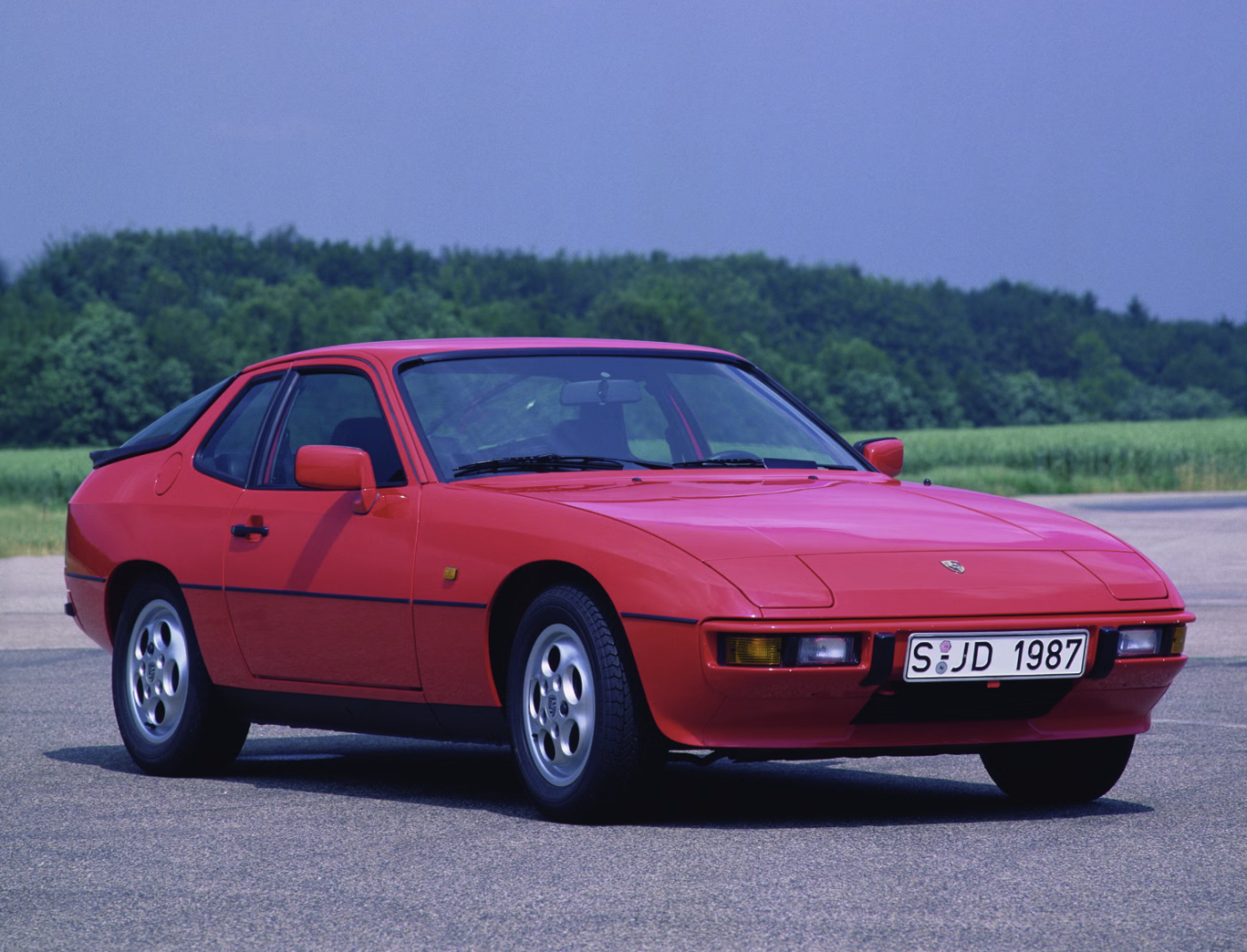
Why the Porsche 924 is a Unique Classic to Buy
The Porsche 924 stands apart as a uniquely accessible and rewarding classic sports car, offering a compelling blend of Porsche heritage, practical engineering, and approachable ownership. Unlike many classic Porsche models, the 924’s entry-level positioning, Volkswagen partnership, and distinct front-engine layout initially drew skepticism from traditionalists—but these same qualities have since evolved into its strongest appeal, making it a truly distinct collector’s choice.
One of the defining features of the 924 is its balanced chassis, featuring a front-mounted, water-cooled inline-four engine and a rear transaxle. This innovative layout granted the 924 near-perfect weight distribution and agile handling, making it one of Porsche’s most approachable classics for everyday driving. Its straightforward mechanical design, paired with relatively affordable parts and maintenance, has created a community of enthusiasts who appreciate its simplicity and reliability as much as its performance.
Beyond its mechanical virtues, the Porsche 924 represents a fascinating transitional moment in automotive history. It marked Porsche's effort to reach a broader audience during a challenging economic period, ultimately serving as a vital stepping stone toward the iconic 944 and 968. Its distinctive shape, designed with aerodynamics and practicality in mind, remains instantly recognizable today, encapsulating the stylistic nuances of late-1970s and early-1980s sports car design.
Finally, with classic Porsche values soaring across the board, the 924 stands out as one of the few remaining affordable vintage Porsches, offering enthusiasts and collectors a relatively low-risk entry into Porsche ownership. Whether you're searching for a first-time classic car, an accessible restoration project, or an enjoyable weekend driver, the Porsche 924's blend of heritage, engineering, and approachability makes it an undeniably unique and rewarding classic to own.
Porsche 924 Variants - A Quick Primer for Potential Buyers On The Variants & Specials To Think About.
We already have ultimate guide to the Porsche 924 so we don't want to repeat everything here. Instead, we will give you a quick primer and summary about the main 924 variants, some of the core model year changes and we will talk about some special editions worth noting as you think about your potential purchase.
Key Variants & Differences
Here’s an overview of the key Porsche 924 variants, each offering distinct characteristics, performance, and collectibility:
Porsche 924 (Base Model)
The original Porsche 924, introduced in 1976, featured a naturally aspirated 2.0-liter inline-four sourced from Volkswagen/Audi.
Initially rated at around 95–110 horsepower, depending on the market, it wasn’t the fastest Porsche but excelled as a lightweight, balanced, and efficient sports car ideal for daily use. Its simplicity, accessibility, and handling made it popular, laying the groundwork for future evolution. Today, the original 924 provides an approachable entry into classic Porsche ownership.
Porsche 924 Turbo (931)
Introduced in 1979, the 924 Turbo (known internally as the Type 931) significantly elevated the model’s performance, addressing critiques of the base model's modest power. Utilizing a turbocharged version of the 2.0-liter inline-four, it produced approximately 170 horsepower (later adjusted due to emissions), delivering spirited acceleration and improved top-end speed.
The 924 Turbo also received notable chassis upgrades, improved braking, aerodynamic enhancements, and a distinctive hood vent, making it easily recognizable and highly desirable among enthusiasts today.
Porsche 924 Carrera GT (937)
Arguably the most sought-after variant, the Porsche 924 Carrera GT arrived in limited numbers in 1980, serving as a homologation special to support Porsche's motorsport ambitions.
It boasted aggressive flared fenders, a functional air scoop, lightweight components, and a significantly enhanced 2.0-liter turbocharged engine producing 210 horsepower. Just over 400 Carrera GT units were built, adding considerable exclusivity. Its striking looks, motorsport credentials, and rarity have made the Carrera GT variant highly collectible and a rising investment classic.
Porsche 924S
Launched later in the model’s life, in 1986, the Porsche 924S integrated key mechanical elements from the newer 944 into the original 924’s streamlined body.
It featured Porsche’s own 2.5-liter inline-four engine, producing around 150–160 horsepower, offering greater refinement and performance over the earlier 924 models. The 924S combined the best of both worlds—retaining the classic lines and simplicity of the original while benefiting from significantly improved dynamics, reliability, and modernized engineering.
Each variant of the Porsche 924 has its own distinct character and appeal, catering to different tastes and collector priorities—from affordable, enjoyable classics, to exclusive, high-performance rarities.
Over its lifespan, the Porsche 924 evolved significantly—starting as a simple, accessible Porsche and concluding as a refined, highly capable sports car. These model-year updates and variants make the 924 an interesting and diverse classic Porsche to collect and enjoy today.
Model Year Changes (1976-1988)
1976–1977
Porsche 924 debuts as an entry-level sports car. It is powered by a 2.0-liter inline-four engine (sourced from Volkswagen/Audi), rated at 95 hp (U.S.) / 125 hp (Euro). It has a 4-speed manual standard and optional 3-speed automatic. Initially equipped with drum brakes at the rear and steel wheels standard, alloys optional.
1978
1978 saw the introduction of a 5-speed manual transmission as an option, greatly improving drivability. Minor interior refinements and improvements to cabin materials and finish are added and the suspension and chassis tuning tweaks enhance ride and handling.
1979
Launch of the Porsche 924 Turbo (931) variant. It gets a turbocharged 2.0-liter engine, 170 hp (Euro), ~150 hp (U.S.). It has those distinctive hood vents, alloy wheels, improved suspension, and four-wheel disc brakes. The interior is also upgraded, with nicer interior trim and sportier details. The base 924 receives minor cosmetic updates and improved rust protection.
1980
Introduction of the limited-production 924 Carrera GT (937) homologation special. It comes with a turbocharged engine rated at 210 hp, wider flared fenders, aggressive aerodynamic upgrades, lighter weight, racing-inspired interior. Only 406 examples produced; highly collectible. Continued refinements to the base and Turbo models, including slight power revisions (due to emissions controls in some markets).
1981–1982
Further emission-related adjustments reduce Turbo model's U.S. power output slightly (approximately 143–154 hp depending on year and market). Minor interior and exterior updates include revised instrumentation and seat fabrics. Improved reliability through updated turbocharger design, fuel injection adjustments, and minor mechanical refinements.
1983–1985
Porsche shifts focus primarily to the Porsche 944, resulting in the 924 base model ending U.S. sales by 1982, but continuing in other markets. 924 Turbo production ceases in 1983. European base 924 continues production with minimal changes, featuring minor interior trim upgrades and enhanced rust protection measures.
1986–1988
Introduction of the Porsche 924S. Combines the classic 924 body with the advanced 2.5-liter inline-four engine from the 944, producing approximately 150 hp (1986-1987) and increased to 160 hp in 1988. Improved suspension, braking system, and updated mechanical components borrowed from the 944 enhance reliability and performance. In 1988, a limited-edition 924S Special Edition (Le Mans edition in Europe and SE in North America) introduced, with slightly firmer suspension, upgraded anti-roll bars, special interior trim, and unique badging. Only produced for final year, marking a desirable collector variant.
End of Production
1988 marks the final production year for the Porsche 924 platform, concluding a 12-year production run. Production focus fully transitions to the Porsche 944 and later 968.
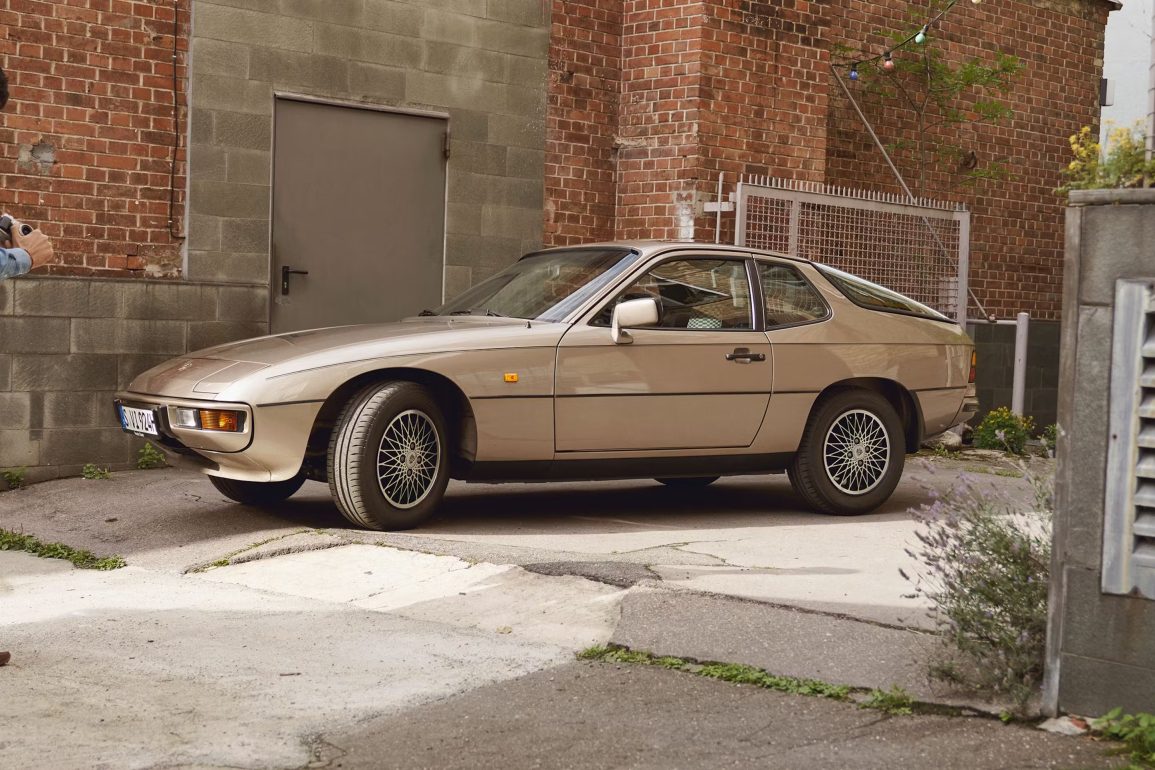
Porsche 924 Market Value & Pricing
The Porsche 924 remains one of the most affordable entry points into classic Porsche ownership, with values varying significantly based on model variant, condition, originality, and rarity. Well-maintained examples of the base 924 typically range between $5,000 and $12,000, making them attractive options for budget-conscious enthusiasts or first-time collectors. The more desirable Turbo models command higher prices—often between $10,000 and $20,000—while limited-edition and pristine 924 Carrera GTs can easily exceed $80,000 to $100,000, reflecting their rarity and motorsport heritage. The later 924S, with its Porsche-engineered drivetrain and improved reliability, generally falls between $8,000 and $18,000 depending on condition and mileage. Overall, the 924 market remains accessible but shows steady appreciation potential, especially for well-documented and preserved examples.
What Are 924s Worth?
Absolutely. Here’s a breakdown of Porsche 924 values by condition tier, covering everything from rough project cars to concours-quality showpieces. These price ranges are based on current market trends as of 2025 and can vary depending on model (base 924, 924 Turbo, 924S, or limited editions like the Carrera GT), location, and originality.
Project Cars & Non-Runners
$2,500 – $6,000
These are the lowest-tier 924s—typically high-mileage, non-running or rough drivers in need of full mechanical and cosmetic restoration. Expect major issues such as engine failure, rust (especially in the battery tray, sills, and floors), cracked interiors, electrical gremlins, and neglected maintenance. They are not investment grade, and restoration costs can easily exceed the car's market value.
Driver-Quality Cars
$6,000 – $12,000
These 924s are roadworthy but far from perfect. They may have older paint, worn interiors, and deferred maintenance, but they run and drive reasonably well. They’re ideal for enthusiasts who want to enjoy a vintage Porsche without worrying about perfect originality. This category includes early 924s and some 924S models, though Turbos in this range will likely have needs. Will need smart upgrades or preservation.
Well-Maintained Originals
$12,000 – $20,000
Here you’ll find clean, mostly original 924s with solid service histories, nice cosmetics, and well-preserved interiors. These are increasingly attractive to collectors looking for unmolested examples.Good examples of 924S and 924 Turbo cars live in this bracket, especially with documented maintenance (timing belts, clutch, brakes, etc.). These cars are rising in value and offer strong usability and long-term potential.
High-Quality Restorations
$20,000 – $40,000
These cars are either meticulously restored or outstanding original survivors, often with low mileage, matching numbers, and factory options intact. Paint, interior, engine bay, and suspension are all typically excellent.In this category, you’ll find the best 924 Turbos, late-model 924S cars (especially 1988), and some limited edition or special package models (like M471 or Le Mans editions). These are collector-worthy.
Rare & Collector-Grade Cars
$50,000 – $150,000+
This tier includes the true investment-grade 924s—notably the Carrera GT, Carrera GTS, and Carrera GTR models. These cars are ultra-rare homologation specials with motorsport DNA, and pristine examples are already commanding six-figure prices. Occasionally, low-mileage, concours-level Turbos or 924S examples in rare colors or with extensive provenance sneak into the lower end of this range.
Factors That Affect Value
As of today, standard Porsche 924 models generally range from $6,000 to $20,000, depending on condition and mileage. Well-preserved or low-mileage examples with full documentation tend to sit at the top of that range.
However, special editions and performance variants, like the 924 Turbo (931) or the ultra-rare 924 Carrera GT, are significantly more valuable. A clean 924 Turbo can bring $20,000–$35,000, while genuine 924 Carrera GTs—limited to just around 400 homologation units—can exceed $100,000, with top examples approaching $150,000 or more.
1. Model and Variant
The single biggest driver of value is which 924 you’re talking about. Early NA cars (1976–1982) are at the base of the market, while the 924 Turbo models and especially the Carrera GT, GTS, and GTR variants command far higher prices due to their performance and rarity. The 924S (1986–1988), which featured the 944’s 2.5L engine, also holds stronger values thanks to its improved performance and build quality.
2. Condition
Condition is king with 924s. Cars that are rust-free, mechanically sorted, and still wearing original paint and trim are commanding premiums. Interior wear (especially dashboard cracks), sunroof issues, and aging electronics are common issues that can drag down value. Cars with a solid service history and recent maintenance—timing belt, water pump, suspension refresh, etc.—stand out in the market.
3. Originality
Stock, unmodified examples are generally worth more, particularly among collectors. Period-correct wheels, original interiors, and factory colors all contribute to higher values. Modified cars, while sometimes desirable to certain buyers, typically trade for less unless the upgrades are high-quality and reversible.
4. Rarity and Provenance
Limited production models like the Carrera GT or factory sport packages (M471, M404) can increase value significantly. Additionally, cars with known ownership history, original documentation, or special options like rare factory colors, limited slip differentials, or sport suspension packages tend to be worth more.
5. Market Trends and Enthusiast Interest
Interest in transaxle Porsches (924, 944, 968) has grown substantially over the past decade. As early 911 and 356 values have soared, collectors have begun to look more seriously at the underappreciated transaxle cars, and the 924 is finally getting its due. Younger enthusiasts, in particular, are drawn to the 924 for its classic lines, analog driving experience, and rising cool factor.
Investment Potential
For years, the Porsche 924 was dismissed by purists as the “entry-level Porsche”—a car with humble Audi roots and a water-cooled four-cylinder engine. But as the collector market matures and enthusiasts re-evaluate Porsche's full history, the 924 has begun to enjoy a well-deserved resurgence in interest and value. The 924’s investment potential lies in its growing recognition, analog driving feel, and low production numbers of certain variants. As prices for air-cooled 911s and even 944 Turbos have skyrocketed, many collectors are turning to the 924 as a smart alternative.
Models with Strongest Upside Potential
The standard 924 (1976–1982) models remain the most affordable and accessible, but it’s the rarer and more performance-focused variants that present the greatest long-term upside:
924 Turbo (931): With better performance, improved styling, and turbocharged character, the 924 Turbo is becoming increasingly desirable. Good examples are still attainable in the $15,000–$30,000 range, but that window is closing fast as collectors realize their historical importance and driving charm.
924S (1986–1988): The 924S brought true Porsche power, with the 944’s 2.5L engine in a lighter body, making it arguably the best-driving 924 variant. The 1988 model, with increased horsepower (160 hp), is the most desirable of the bunch. Values remain relatively low—typically between $10,000 and $20,000—but these cars are beginning to attract serious attention from enthusiasts and younger collectors.
924 Carrera GT: This is the holy grail of the 924 line. Built to homologate Porsche’s Group 4 racing cars, the Carrera GT featured a wider body, upgraded suspension, and 210 hp from a highly tuned turbocharged engine. With only around 400 units produced, it is extremely rare and now commands six-figure prices. Well-kept examples have sold for over $125,000, and that number is expected to continue climbing as these cars become harder to find.
924 Carrera GTS & GTR: Built in extremely limited numbers for racing homologation, these are virtually unicorns in the Porsche world. Their rarity and motorsport pedigree put them well into collector-grade territory, with auction results reaching well over $500,000, depending on history and condition.
Long-Term Outlook
As the collector car market continues to place greater value on lightweight, analog, driver-focused cars, the 924 is finally getting a seat at the table. Enthusiasts are beginning to understand its significance as the foundation of Porsche’s successful front-engine, rear-transaxle platform, and the fact that it helped save Porsche financially in the late 1970s.
Recent Porsche 924 Values & Market Sales Trends
Below, our friends at Classic.com chart recent sales and trends in the Porsche 924 market.
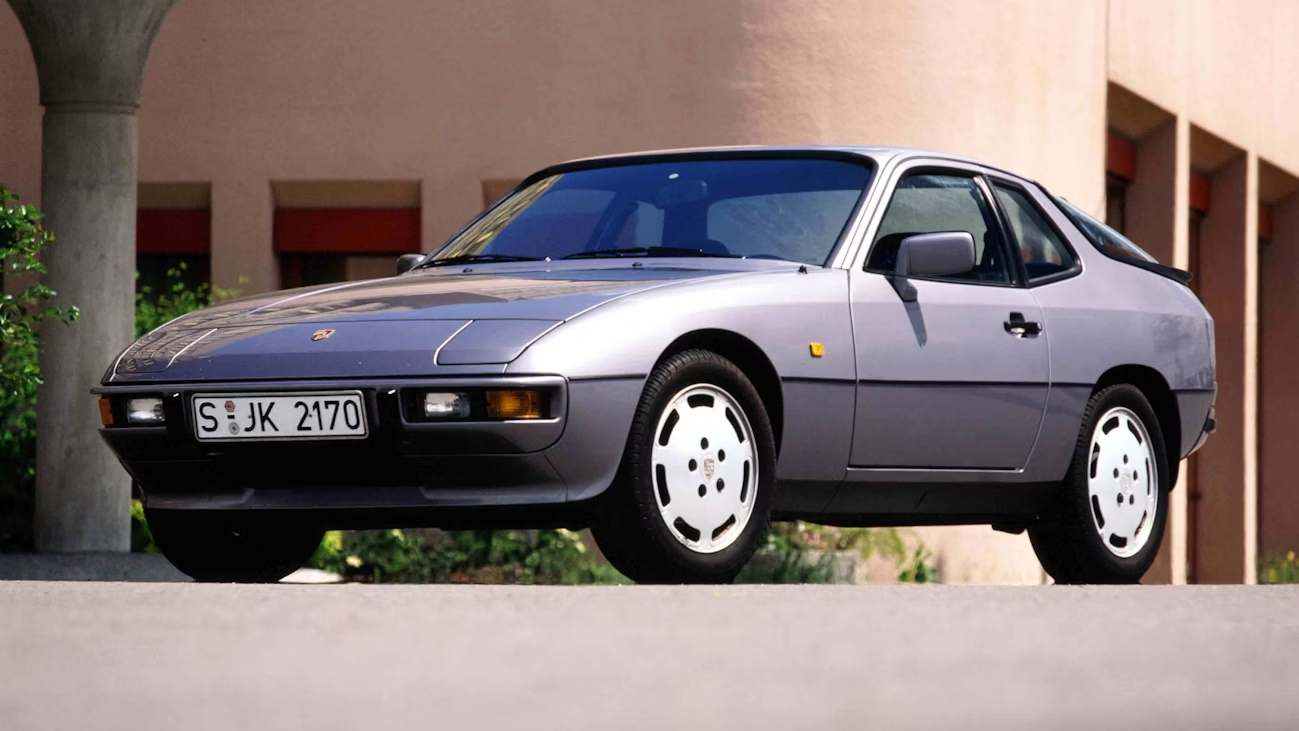
Porsche 924 Driving Experience & What to Expect
What They Said at The Time
When the Porsche 924 was introduced in 1976, it received a mix of curiosity, praise, and skepticism from the motoring press. As Porsche’s first front-engine, water-cooled production car—and a significant departure from the rear-engine 911—the 924 marked a bold new direction for the brand. Many journalists acknowledged that while it didn’t offer the brute force or exotic engineering of the 911, it brought something entirely different to the table: accessibility, balance, and modern usability.
Road & Track, in its early review, noted the car's impressive composure and agility, writing that
“the 924 has a crispness in handling and control layout that is unmistakably Porsche.”
They appreciated the transaxle layout, praising the car’s weight distribution and neutral handling characteristics. The magazine also commented on the quality of the ride and steering feel, which they described as “refreshingly honest and direct, giving the driver a clear sense of connection with the road.” However, they were less enthusiastic about the engine’s modest output, saying that “acceleration is adequate but leaves the enthusiast wanting more.”
Car and Driver echoed similar sentiments, calling the 924
“a well-rounded GT car with surprising refinement for the price.”
They admired its modern styling and practical hatchback configuration, which felt futuristic compared to the 911’s aging silhouette. While they acknowledged the Volkswagen-sourced 2.0L inline-four was not especially thrilling, they pointed out that the 924 wasn’t meant to replace the 911—it was meant to bring Porsche performance to a broader audience.
Overall, the early reviews respected the 924 for what it was: a cleverly engineered, affordable sports coupe with genuine Porsche DNA in its handling and design. While not everyone loved the underwhelming engine, many saw the 924 as a well-balanced and forward-looking machine—one that offered a uniquely European driving experience without the price or temperament of its 911 sibling. Over time, those early impressions have come full circle, with today’s enthusiasts revisiting those very qualities—balance, usability, and simplicity—with a much greater sense of appreciation.
What to Expect Today
Driving a Porsche 924 today is like stepping back into the golden age of analog motoring—where balance, driver feel, and simplicity took precedence over brute force or electronic wizardry. The 924 isn’t about raw power or straight-line speed. Instead, it’s a car that rewards smooth inputs, proper technique, and a genuine appreciation for lightness and precision.
The first thing you’ll notice behind the wheel is the superb weight distribution and chassis balance, thanks to the transaxle layout (engine in the front, transmission in the rear). This gives the 924 a light, predictable, and forgiving feel, especially through corners. The steering is unassisted in most models, which means you’ll feel everything—every bump, every load shift, every nuance of the road. It’s not heavy, just honest, and once you start to trust the car’s feedback, it becomes a joy to push through winding roads.
In terms of performance, the base 924 models make around 95–110 horsepower, depending on year and market, while the 924 Turbo (931) bumps that to roughly 150 hp. The 924S, fitted with the 944’s 2.5L engine, delivers 147–160 hp, giving it much more modern punch. Acceleration is modest by today's standards—0–60 mph in the 8-10 second range depending on variant—but the car’s light weight (around 2,400–2,600 lbs) makes it feel more lively than the numbers suggest. It's a car that’s more about momentum and rhythm than outright speed.
As a daily driver, the 924 is surprisingly usable. Visibility is excellent, the cabin is roomy, and the hatchback layout provides more practicality than you’d expect from a classic Porsche. Ride quality is firm but compliant, especially with stock suspension. That said, don’t expect modern creature comforts—AC systems can be weak, and older examples may have rattles, tired bushings, or fading interior bits. The 924 is happiest as a weekend cruiser or vintage touring companion, though plenty of owners do drive them regularly with no issue, especially the later 924S models.
For a prospective buyer, the 924 offers a refreshingly honest and engaging driving experience. It’s not trying to be a supercar or a tire-shredding rocket—it’s a lightweight, well-balanced, beautifully engineered machine that invites you to drive with finesse. It teaches you how to be a better driver. If you’re looking for a vintage Porsche that delivers connection over power and charm over flash, the 924 is absolutely worth a closer look.
Getting Real - Costs to Own & Maintenance
The Porsche 924 remains one of the most affordable classic Porsches to own, especially compared to its more expensive siblings like the 911 or 928. But while it's relatively budget-friendly, it’s still a vintage European sports car—so ownership does come with some costs that prospective buyers should understand. Whether you’re planning to daily drive a 924 or keep it as a weekend cruiser, knowing what to expect in terms of maintenance, parts, and insurance is key to enjoying the experience without surprises.
Ownership Costs & Maintenance: What to Expect
Maintenance costs for a 924 are generally modest, especially if you're mechanically inclined and plan to do some of the work yourself. Routine upkeep like oil changes, timing belt service, brakes, and suspension refreshes are fairly straightforward and inexpensive when compared to other vintage Porsches. A well-maintained 924 can be very reliable, but neglect or deferred maintenance quickly turns it into a headache.
Timing belt changes should be done roughly every 30,000 to 40,000 miles, or every 4–5 years, and while parts are inexpensive, labor costs can vary—expect to pay $400–$700 for the job if done by a shop. Regular oil changes with quality fluids cost $100–$150, and brake jobs typically run $400–$600 per axle with quality parts. Clutch replacements, which aren’t needed often, can run around $1,000–$1,500. If you're restoring or refreshing a car that’s been sitting, budget for fuel system cleaning, cooling system repairs, and suspension bushings—all of which can add up to several thousand dollars if done at once.
Parts Availability & Pricing
Parts availability for the 924 is generally good, especially for 924S and late-model cars, thanks to shared components with other VW and Porsche models. Most mechanical parts—engine, transmission, brakes, suspension—are relatively easy to source and reasonably priced through specialty suppliers and enthusiast networks.
However, some interior trim pieces, early dash components, and unique body parts (like Turbo-specific pieces or Euro-market items) can be harder to find or expensive. Used parts from donor cars are still common, but as these cars age, clean originals are becoming more scarce. Expect to do some hunting if you’re restoring a car to factory-original condition.
Insurance Costs for a Porsche 924
One of the most appealing aspects of 924 ownership is how affordable insurance can be, especially if you qualify for collector or classic car policies. Most owners report annual premiums ranging from $300 to $800, depending on the car’s value, mileage allowance, and your driving history. For higher-value cars (such as a 924 Turbo or 924S in excellent condition), you might pay a bit more, especially if the agreed value exceeds $20,000.
Daily-driver policies tend to cost more, particularly if you’re under 30 or live in an area with high insurance rates. That said, compared to other classic Porsches, the 924 is a relatively low-risk, low-cost vehicle to insure, making it even more appealing as a classic starter Porsche.
Final Thoughts
The Porsche 924 offers a compelling ownership experience with a manageable cost of entry and reasonable upkeep. If you choose a well-maintained car and stay on top of regular servicing, it can be surprisingly reliable and inexpensive to run. For those willing to put in a little time and effort—or find a good shop that knows vintage transaxle Porsches—the 924 is one of the most accessible ways to get behind the wheel of a true classic Porsche. Just like the car itself, owning one is about balance, simplicity, and smart decision-making—not excess.
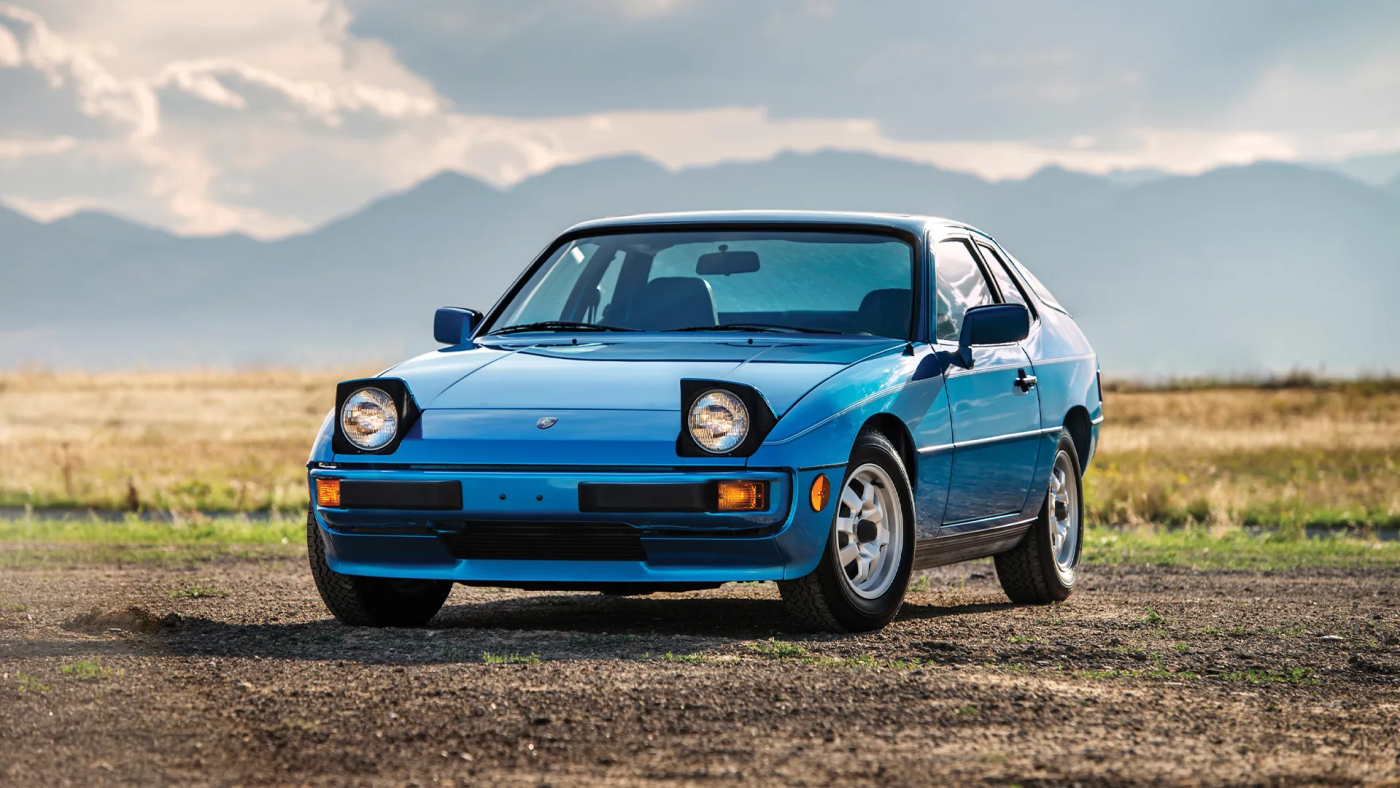
Other Key Buying Considerations
Ensuring Performance, Authenticity, and Long-Term Enjoyment
Purchasing a Porsche 924 requires more than just finding a car in good cosmetic condition - you must carefully evaluate its mechanical health, authenticity, and overall driving experience to ensure they’re making a sound investment. While the 924 is beloved for its lightweight handling, balance, and engaging driving dynamics, it also comes with specific quirks, maintenance demands, and potential problem areas that need to be assessed before making a purchase.
Rust Condition & Body Integrity
Rust is arguably the biggest threat to the longevity and safety of any classic Porsche 924. While the 924’s galvanized body was a step forward in corrosion resistance, it wasn’t immune—especially in earlier models or those poorly stored over the years. Since the 924 uses a unibody design, rust doesn’t just affect aesthetics—it can compromise the structure itself, which is costly and labor-intensive to repair properly.
Critical areas to inspect include:
Battery tray (“the hell hole”) – Battery acid leaks and poor drainage often lead to corrosion here, which can spread to the firewall and passenger footwell.
Sills and rocker panels – Rust here can indicate deeper structural issues and is difficult to repair without cutting and welding.
Rear suspension mounting points and torque tube tunnel – These areas are vital for handling and safety; corrosion here is a red flag.
Floor pans and wheel arches – Often hidden under carpet or undercoating, these areas should be carefully checked for bubbling or soft spots.
Buy the most rust-free body you can find. Cosmetic flaws are far easier to fix than structural corrosion.
Interior Condition & Parts Availability
The 924’s interior was practical and minimalist, but interior parts have become increasingly hard to source, especially if you’re aiming for originality. Dashboards are notoriously prone to cracking, and original Pasha fabric or vinyl seat materials are difficult to find or expensive to replicate.
Common trouble spots include:
Cracked dash tops (very common, especially in sunbelt cars)
Torn or sagging seat upholstery
Worn-out door cards and armrests
Missing trim pieces or center console switches
Non-working gauges or HVAC controls
While reproduction parts exist, they often don’t match original finishes perfectly, and certain early trim details may be impossible to find. If the interior is intact and clean, that can save you thousands of dollars and hours of restoration work.
A well-preserved interior is often a sign of careful ownership. Even faded original materials are better than incorrectly replaced parts if you value authenticity.
Model-Specific Differences
The Porsche 924 evolved significantly from 1976 to 1988, and your choice should depend on what you want from the car.
Base 924 (1976–1982): Powered by a 2.0L inline-four sourced from Audi. Not fast by modern standards, but light, reliable, and nimble. Good for affordable classic ownership, though some parts (especially early-style bumpers and trim) are hard to find.
924 Turbo (931) (1979–1982): A major leap in performance, thanks to a KKK turbocharger and up to 170 hp in later models. Much quicker but more complex and demanding to maintain. Turbo-specific parts (wastegate, boost control, engine internals) are scarce.
924S (1986–1988): Equipped with the Porsche 944’s 2.5L engine and updated suspension. Offers a substantial performance boost (up to 160 hp in 1988 U.S. models) and improved build quality. The best choice for a daily driver or spirited use.
924S SE (1988, U.S. only): A lightweight, performance-oriented special edition with blacked-out trim, sport suspension, and unique cloth interior. Rare and increasingly collectible.
Know which model suits your needs. The base 924 is charming and simple, the Turbo is fun but fussy, and the 924S offers the best performance per dollar.
Market Trends & Parts Support
While long overshadowed by its 911 siblings, the 924 is enjoying a renaissance among Porsche enthusiasts, especially as 911 and 944 prices soar. Clean, original 924s—especially Turbos and late-model 924S examples—are climbing in value. The 924S SE and Carrera GT derivatives are already collectible.
Parts support has improved thanks to companies like:
Pelican Parts
Paragon Products
Porsche Classic
924.org and online enthusiast forums
Still, certain parts—especially for the Turbo and early trim pieces—are NLA (no longer available) or exist only as expensive NOS or used components.
Now is a smart time to buy a solid 924 if you want an affordable, appreciating Porsche with vintage character and a great driving experience.
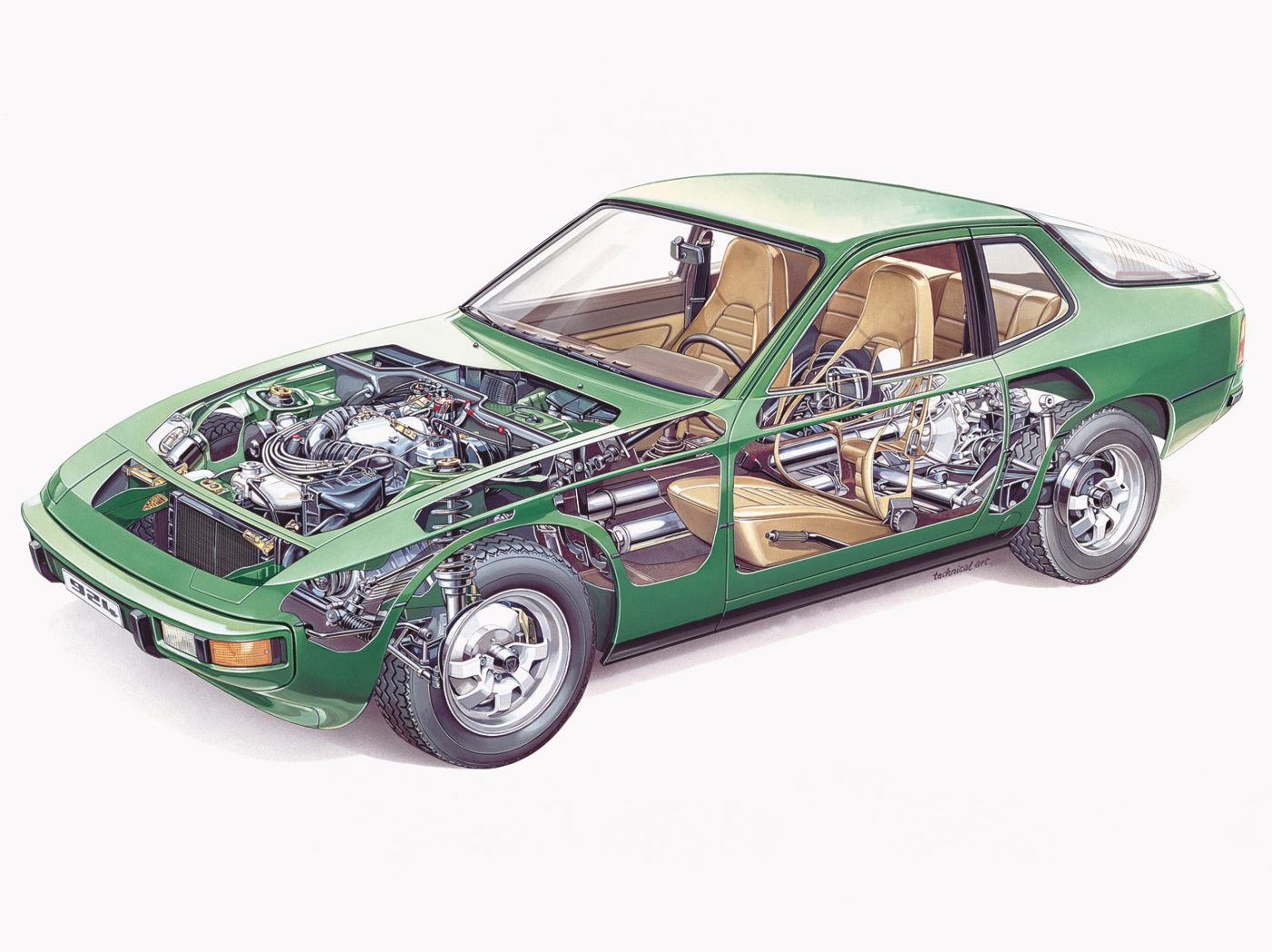
Common Porsche 924 Problems
What Buyers Should Know
The Porsche 924 is known for its lightweight balance, sleek design, and everyday usability—but as with any vintage car, it comes with its share of quirks and potential trouble areas. Because many 924s have lived hard lives or been neglected during periods of low market value, a careful pre-purchase inspection is essential. Whether you're looking at a base 924, a 924S, or a Turbo, here are some of the most common issues and red flags to be aware of.
(see our full article on common Porsche 924 problems here).
1. Timing Belt & Water Pump Neglect
The 924’s engine, especially in 924S models, uses a timing belt that needs to be changed approximately every 30,000–40,000 miles or every 5 years. If this isn’t done on time and the belt breaks, it can cause catastrophic engine damage (especially in interference engines like the 924S). The water pump is often replaced at the same time—neglecting either can lead to expensive repairs. Look for documentation of recent belt and pump replacements. If there's no record, budget for immediate service.
2. Cooling System Problems
Overheating is a known issue, particularly in cars with clogged radiators, aging thermostats, or faulty fans. Corrosion inside the cooling system can also lead to head gasket failure over time. Ensure the car runs cool at idle and under load. Look for signs of coolant leaks, corrosion, and fluctuating temperature readings.
3. Electrical Gremlins
The 924 is a 40+ year old European car—so electrical issues are not uncommon. Poor grounds, failing fuses, dim lights, and intermittent switches can all plague cars with aging wiring or previous owner “repairs.” Make sure all lights, gauges, the horn, wipers, and heater controls work. Check for evidence of hacked wiring or cheap aftermarket accessories.
4. Interior Wear & Dash Cracks
Many 924s suffer from interior degradation, especially cracked dashboards (a very common problem), torn seats, faded carpets, and broken trim pieces. Replacements can be hard to find or expensive, especially for early cars with unique dash layouts. Inspect the dash closely, look for broken HVAC controls, and check that the sunroof (if equipped) opens and seals properly.
5. Rust
While not as rust-prone as some 1970s cars, the 924 can still develop serious rust in key areas: the battery tray (which drains into the cabin), sills, floor pans, inner fenders, and under the rear hatch. Pull up the carpet in the rear hatch and footwells, inspect the battery tray from above and below, and look underneath the car for rot or poor-quality repairs.
6. Fuel System Issues
Many 924s sit for long periods, leading to gummed-up fuel injectors, degraded fuel lines, or failing in-tank pumps. This can result in poor running, hesitation, or starting problems, especially in early cars with Bosch CIS fuel injection. Ask how long the car has been sitting. Listen for a smooth cold start and steady idle. Smell for fuel leaks around the tank or under the hood.
7. Clutch & Gearbox Wear
The gearbox is generally robust, but the shifter bushings often wear out, leading to vague or sloppy shifts. Clutch wear is another concern—especially if the pedal is high or the car shudders on takeoff. Drive the car and assess gear engagement. Ensure reverse and second gear go in cleanly, and watch for clutch slipping or noise.
Final Thoughts
While the 924 is one of the most affordable and approachable classic Porsches, buying the wrong one can still lead to headaches and surprise expenses. The best strategy is to find a well-maintained, rust-free example with a documented service history, particularly for timing belt and cooling system maintenance. Avoid "cheap" projects unless you're prepared for a full restoration. Get a pre-purchase inspection from a Porsche specialist, and if you start with a good car, you’ll be rewarded with a light, nimble, and deeply satisfying vintage sports car experience—without the crushing costs of its more famous siblings.
Buying A Porsche 924 FAQs
Here are all the questions we've received from readers considering a Porsche 924 for their garage
What to look for when buying a 924 in terms of authenticity & documentation
When considering a Porsche 924 purchase, authenticity and documentation should be near the top of your checklist—especially if you're hoping to buy a clean, investment-worthy example. While the 924 isn't as heavily scrutinized by collectors as the 911, a properly documented, original car will hold its value better, be easier to insure, and often reflects a history of careful ownership. In a market where many 924s have been neglected, modified, or cobbled together from multiple cars, verifying the car’s identity and its paper trail is essential. Here's how to approach it like a seasoned buyer.
1. Matching VINs and Identification Numbers
Begin by verifying the Vehicle Identification Number (VIN) across all key locations. The 924’s VIN should match the title and appear in several places, including:
Stamped into the engine bay bulkhead (on the passenger side firewall)
On the dashboard plate, visible through the windshield
On the door jamb VIN sticker
If any of these are missing, inconsistent, or show signs of tampering, walk away or investigate thoroughly—it could signal a rebuild, theft recovery, or title problem.
Also check the engine number, especially on early cars and Turbos. While 924/4 models used VW-sourced blocks, enthusiasts still value matching-number engines. This becomes especially important on limited-production models like the 924 Turbo (931) and the 924 Carrera GT or GTS, where originality plays a larger role in value.
How to verify authenticity in a Porsche 924?
One of the first steps in determining a Porsche 924’s authenticity is checking if it has matching numbers for its VIN, engine, and transmission. A numbers-matching car retains its factory-original drivetrain, which significantly increases its collectibility.
Porsche VIN (Vehicle Identification Number) – The 924’s VIN should match across the car’s chassis, title, and documentation. The VIN plate is located in a few possible places: Inside the left windshield post (A-pillar) on a small aluminum plate; Stamped into the front trunk floor near the front crossmember; On the factory build sticker inside the driver’s door jamb (later models only).
While many 924s were treated as affordable entry-level Porsches for decades, time has shown that originality matters—especially for models like the 924 Turbo, Carrera GT, and 924S SE. As a buyer, you’ll want to confirm that the car in question retains its factory-correct components, documentation, and configuration to ensure both value and peace of mind.
Begin by checking that the Vehicle Identification Number (VIN) matches across the car and its paperwork. The VIN should be stamped into the firewall on the passenger side of the engine bay and should match what’s visible on the dashboard plate at the base of the windshield and on the driver’s door jamb sticker. Any mismatch between these VIN locations—or between the car and its title—should raise a red flag. Using the VIN, you can decode the model year and basic specifications of the car. For example, early 924s begin with “92A,” and the 10th digit of the VIN indicates the production year.
Beyond the VIN, it’s important to inspect the engine and transmission numbers to confirm whether the drivetrain is original. These numbers are typically stamped on the engine block near the bellhousing and on the transaxle casing. Base-model 924s used VW/Audi-sourced engines, while the 924S employed a Porsche-built 2.5L inline-four derived from the 944. Matching these numbers to factory records or a Certificate of Authenticity (COA) can verify whether the engine and gearbox are original to the car—an especially valuable trait for collectors and enthusiasts seeking correct examples.
Ordering a Porsche Certificate of Authenticity (COA) or Porsche Production Specification (PPS) from the factory is a wise move. These documents provide a verified list of the car’s original specifications, including the VIN, engine and transmission numbers, build date, exterior and interior colors, and factory options. Having this information not only confirms the car’s identity but also allows you to verify whether the current condition aligns with how the car left the factory. This is particularly useful when evaluating cars that have been repainted, modified, or partially restored.
It’s also helpful to cross-check the car’s equipment against factory brochures or known period options. Look for original wheels, badging, upholstery, steering wheels, and trim. For instance, a genuine 924S SE should have its signature black-on-black appearance, lowered suspension, and sport seats. Any mismatched parts or aftermarket additions may detract from originality—though they can be acceptable on a well-sorted driver, they matter more if you're buying for investment or long-term value.
In some unfortunate cases, cars may have been rebodied, rebuilt, or had VIN plate swaps. These instances are rare but not unheard of, particularly with 924s that may have changed hands many times. If there are inconsistencies in how the VIN is displayed or signs of tampering—such as removed, restamped, or riveted-on plates—proceed with caution. A clean title and consistent registration history are important, and a Pre-Purchase Inspection (PPI) by a Porsche specialist is highly recommended to catch issues that aren’t immediately obvious to the untrained eye.
Ultimately, verifying authenticity in a Porsche 924 isn’t just about ensuring you’re getting what you paid for—it’s about buying a car with a verifiable history, preserved character, and confidence that it will hold its value over time. Whether you're looking for a pristine collector-grade example or simply a well-kept enthusiast car, taking the time to confirm a 924’s authenticity will pay off in both satisfaction and future resale.
Just how important are service records and ownership history?
Service records and ownership history are absolutely critical when buying a Porsche 924—especially given the car’s age and relatively undervalued past. For decades, the 924 was considered an entry-level Porsche, and as a result, many examples were poorly maintained, modified on a budget, or neglected altogether. A well-documented service history provides not only evidence of regular maintenance (like timing belt replacements, fuel system work, and suspension upkeep), but also insight into how carefully the car was owned and driven over time. This is particularly important for models like the 924 Turbo (931) or 924S, which have more complex mechanical systems that can become expensive to fix if neglected.
Ownership history is just as important. A car that has passed through multiple unknown hands or lacks title consistency can raise red flags, while one with long-term ownership and a clear paper trail tends to reflect a higher level of care. Even cosmetic and interior condition—often overlooked—can be better understood through past ownership records. In short, service records and ownership history separate a trustworthy 924 from a potentially costly project car. If you’re considering buying one, prioritize examples with detailed maintenance logs, clean titles, and consistent registration history—they’re usually worth the premium and offer far greater peace of mind.
Originality vs. Modified Examples: What’s More Valuable?
When it comes to the Porsche 924, originality almost always holds greater long-term value, especially among collectors and purists. A numbers-matching, factory-correct 924—especially rare variants like the Turbo (931), Carrera GT, or 924S SE—is considered more desirable because it reflects the car's true historical significance. These cars, when kept in original paint, trim, and mechanical spec (even with some cosmetic wear), tend to command higher prices and have stronger investment potential. Documentation, such as a Porsche Certificate of Authenticity (COA) or build sheet, further enhances their value by confirming originality.
That said, tastefully modified 924s can still appeal to enthusiasts, particularly those looking for an engaging driver’s car rather than a garage queen. Common upgrades like suspension improvements, modern ignition systems, performance exhausts, or even 944 engine swaps can make the car more enjoyable and reliable—but they typically diminish collector value. The market generally favors factory-spec cars when it comes to resale and appreciation. So, while a well-sorted modified 924 may offer a more exciting drive, if your goal is investment or long-term collectibility, a clean, original example is the smarter buy.
What are the most sought after Porsche 924 variants?
The most sought-after Porsche 924 variants are typically those that either delivered significant performance upgrades, were produced in limited numbers, or had unique motorsport ties—making them stand out from the standard models. At the top of the list is the Porsche 924 Carrera GT, a homologation special built for Group 4 racing. With flared fenders, a wide stance, aggressive styling, and a turbocharged engine producing around 210 hp, the Carrera GT is extremely rare (only around 400 units were built) and now highly collectible. Even rarer is the Carrera GTS, a stripped-down, lightweight version of the GT with up to 245 hp—only 59 of these were made, making it a true unicorn in the Porsche world.
Another sought-after model is the Porsche 924 Turbo (931), which added significant performance over the base 924. Especially desirable are the Series 2 Turbo models (1981–1982), which featured reliability improvements and up to 170 hp. For buyers seeking a blend of performance, refinement, and practicality, the 924S is increasingly valued. Produced from 1986 to 1988, the 924S uses the same 2.5L engine as the early 944, delivering much stronger performance while retaining the 924’s cleaner styling. Of the 924S models, the 1988 924S SE (Special Edition) is the rarest and most performance-focused, with a lowered sport suspension, black-on-black aesthetics, and limited production numbers—making it a modern collector's favorite.
What are the most popular Porsche 924 colors?
The most popular Porsche 924 colors were largely shaped by the styling trends of the late 1970s and early 1980s, with classic Porsche hues leading the pack. Guards Red (Indischrot) was a top choice, especially on later 924 Turbo and 924S models, offering a bold, timeless sports car look. Alpine White and Zermatt Silver Metallic were also very popular, thanks to their clean, crisp appearance and ability to highlight the car’s lines without being flashy. Black was another strong seller, giving the 924 an aggressive, elegant presence—particularly when paired with striking interior options like Pasha.
More era-specific colors like Mars Red, Dolomite Gray Metallic, and Sahara Beige reflected the 924’s vintage roots and are becoming increasingly appreciated by collectors today. Rarer shades such as Minerva Blue Metallic or Ruby Red Metallic are now highly sought after for their uniqueness and period charm. Ultimately, while classic reds, whites, silvers, and blacks are safest from a resale perspective, more adventurous or retro colors can make a 924 stand out—and may even command a premium among enthusiasts looking for something special.


